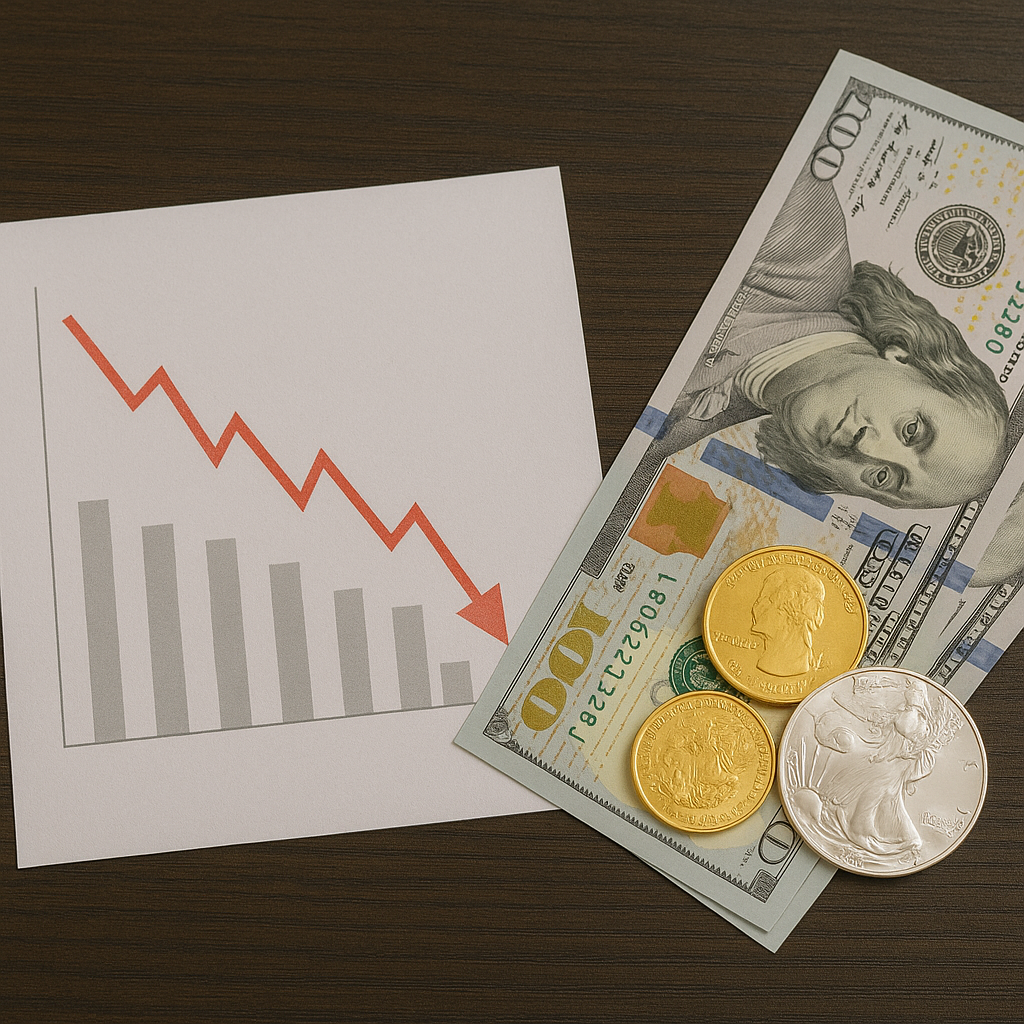The Bubble May Be Bursting
Alarm bells are ringing across America’s financial landscape as loan defaults surge to levels that are triggering uncomfortable memories of past financial crises. From subprime auto loans to unsecured consumer debt, cracks are appearing in the foundation of what has been a decade-long credit expansion fueled by historically low interest rates and aggressive lending standards.
The recent collapse of Tricolor, a major used car seller and subprime auto lender, alongside First Brands, a prominent auto parts supplier, has sent shockwaves through Wall Street. These failures aren’t isolated incidents—they’re symptoms of a much larger problem brewing in America’s $1.6 trillion auto loan market and beyond.
A Familiar Pattern Emerges
The parallels to 2008 are becoming increasingly difficult to ignore. During the last financial crisis, it was subprime mortgage defaults that triggered a cascade of failures across the financial system. Today, we’re witnessing similar warning signs across multiple lending categories:
Auto Loans: Subprime auto loan delinquencies have climbed to their highest levels since 2010, with default rates exceeding 5% at many major lenders. The average car payment has soared past $700 per month, straining household budgets already squeezed by inflation.
Credit Cards: Americans now carry over $1.1 trillion in credit card debt, with average interest rates hovering near 25%—the highest in more than 30 years. Delinquency rates are rising steadily as consumers struggle with higher costs for essential goods and services.
Personal Loans: The explosive growth in unsecured personal lending, often facilitated by fintech platforms, has created a new category of risk. Default rates on these loans have doubled in the past year as economic pressures mount.
Commercial Real Estate: Office buildings sit vacant across major cities, with vacancy rates exceeding 20% in some markets. Banks holding significant commercial real estate loans are facing mounting losses that could rival the savings and loan crisis of the 1980s.
Contact our precious metals specialists today to discuss how gold and silver can protect your portfolio from mounting financial system risks.
The Economic Pressures Driving Defaults
Several converging factors are pushing American borrowers to the breaking point:
Persistent Inflation
Despite Federal Reserve efforts to control price increases, inflation continues to erode purchasing power. Essential costs—groceries, utilities, insurance, and housing—have risen dramatically, forcing many Americans to rely on credit just to maintain their standard of living.
Rising Interest Rates
The Federal Reserve’s aggressive rate hiking campaign has made debt servicing significantly more expensive. Variable-rate loans and credit cards have seen monthly payments spike, while those seeking to refinance face rates two to three times higher than what they originally secured.
Depleted Savings
The pandemic-era savings cushion that helped many households weather initial economic disruption has largely evaporated. The personal savings rate has fallen to levels not seen since 2005, leaving families with little buffer against unexpected expenses or income disruption.
Labor Market Softening
While headline unemployment remains relatively low, quality job growth has slowed considerably. Many workers have been forced into lower-paying positions, while others face reduced hours or gig economy volatility that makes consistent loan payments challenging.
What This Means for Your Wealth
History teaches us that credit bubbles don’t deflate gradually—they burst. When lending standards loosen and defaults begin mounting, the effects ripple through the entire financial system. Banks tighten lending, businesses cut back on investment, consumer spending contracts, and asset prices fall. This creates a self-reinforcing downward spiral that can devastate unprepared portfolios.
The smart money has already begun repositioning. Gold prices have surged over 50% year-to-date, reflecting growing institutional recognition that traditional portfolios need protection against financial system stress. Central banks worldwide have been accumulating gold at the fastest pace in decades, adding over 1,000 tons annually for three consecutive years.
Why Precious Metals Shine During Credit Crises
When loan defaults surge and financial instability spreads, precious metals consistently demonstrate their value as portfolio protectors:
No Counterparty Risk: Physical gold and silver aren’t someone else’s liability. They can’t default, be diluted, or disappear in a bank failure.
Historical Safe Haven: During every major financial crisis of the past century—from the Great Depression through 2008—gold has preserved and grown wealth while paper assets collapsed.
Inflation Hedge: As defaults mount and governments inevitably respond with stimulus and money printing, precious metals protect against currency debasement.
Liquidity in Crisis: When credit markets freeze and panic spreads, gold remains highly liquid and universally valued.
Portfolio Insurance: Even a modest allocation to precious metals can significantly reduce portfolio volatility and protect against catastrophic losses.
Protect your portfolio with physical gold and silver. Our experienced team can show you exactly how to position your assets for what’s ahead.
The 2008 Playbook: What We Learned
Those who lived through the 2008 financial crisis remember the sequence all too well. Warning signs appeared gradually—rising defaults, failing lenders, credit tightening—before the dam finally broke. Lehman Brothers’ collapse sent shockwaves that nearly toppled the entire global financial system.
During the worst of that crisis, from late 2008 through 2011:
- The S&P 500 plunged over 50%
- Millions lost their homes to foreclosure
- Major banks required government bailouts to survive
- Unemployment soared above 10%
- Gold prices nearly tripled, rising from $800 to over $1,900 per ounce
Investors who had diversified into precious metals not only preserved their wealth but actually grew it significantly while others watched their portfolios crumble. Many were able to opportunistically buy stocks, real estate, and other assets at fire-sale prices using their precious metals gains.
Taking Action Before the Crisis Deepens
The time to prepare for a financial storm is before it arrives, not during the chaos. Today’s warning signs—surging loan defaults, failing lenders, stressed consumers, softening employment—provide a window of opportunity for proactive investors.
Strategic Precious Metals Allocation
Financial advisors traditionally recommend a 5-15% allocation to precious metals as portfolio insurance. However, given current conditions, many sophisticated investors are increasing those allocations significantly. The right mix depends on your individual circumstances:
Physical Gold Bullion: The cornerstone of any precious metals strategy. Coins and bars offer maximum security and universally recognized value.
Physical Silver: Often called “the people’s gold,” silver offers affordability and industrial demand characteristics that can amplify gains during economic recovery.
Precious Metals IRA: Tax-advantaged precious metals ownership that protects retirement savings from financial system risk while maintaining the benefits of an IRA structure.
Strategic Diversification: A thoughtful combination of gold, silver, and potentially platinum or palladium, sized appropriately to your overall portfolio and risk tolerance.
The American Independence Gold Advantage
At American Independence Gold, we’ve guided thousands of investors through periods of economic uncertainty. Our team understands that precious metals aren’t just about price appreciation—they’re about protection, peace of mind, and preserving the wealth you’ve worked a lifetime to build.
We offer:
- Expert Guidance: No high-pressure sales tactics, just honest advice from professionals who understand both precious metals markets and portfolio strategy
- Premium Products: Access to a wide selection of investment-grade coins and bars from respected mints worldwide
- Secure Storage: Options for secure, insured storage or direct delivery to your door
- IRA Specialization: Deep expertise in precious metals IRA establishment and administration
- Educational Resources: Ongoing market insights and educational materials to keep you informed
- Transparent Pricing: Competitive pricing with no hidden fees or surprise charges
The Window Is Closing
As loan defaults accelerate and financial stress builds, precious metals prices reflect growing demand from investors seeking protection. Gold’s 50% gain this year, silver’s nearly 70% rise, and record demand levels indicate that the smart money has already begun positioning defensively.
Waiting for definitive proof that a crisis has arrived means accepting higher precious metals prices and reduced availability. The investors who preserve and grow their wealth during turbulent times are those who act on warning signs, not on headlines announcing that disaster has struck.
Your financial security is too important to leave to chance. The patterns are clear, the risks are mounting, and the solution is time-tested. Precious metals have protected wealth through every financial crisis in modern history—they stand ready to do the same for you.
Contact American Independence Gold today for a complimentary portfolio consultation. Our precious metals specialists will provide personalized guidance on protecting your wealth with gold and silver. Don’t wait for the next crisis to strike—secure your financial future now.
American Independence Gold is a trusted precious metals dealer specializing in helping individuals and families protect and preserve their wealth through strategic gold and silver investments. Our experienced team is committed to providing honest, professional guidance tailored to your unique financial situation.
Call us today or visit our website to request your free investment guide and portfolio consultation.





